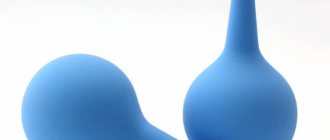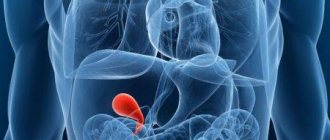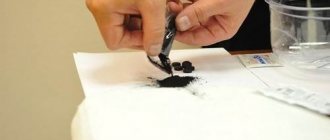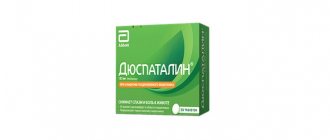About hypertensive enema
A hypertonic solution is used when the introduction of significant volumes of liquids into the intestinal cavity is prohibited. This is often associated with the postoperative period: the intestines are restored, so they are partially effective. Also among the indications for hypertonic lavage are:
- Low connections (anastomoses) of the rectum and colon;
- Sutures in the area of the large intestine;
- Swelling of the brain.
It is called hypertonic because it has a strong effect, stimulating intense contraction of the intestinal walls.
The fluid entering inside collects the moisture accumulated between the cells of the body in the large intestine, reducing the pressure on the human body. There is a feeling of relief. Gives a cleansing effect.
The composition of the hypertonic solution includes: sodium chloride solution 10%, magnesium 20%, sodium sulfate - in the same amount.
The volume of enema liquid is small, 50-100 ml. Despite the modest volume, the result of the procedure is impressive and fast. To influence the solution, heat the liquid a couple of degrees above the normal temperature of the human body: 37-38 0C. The small volume of liquid makes it possible to use a simple bulb, a Janet syringe, according to the person’s preference.
A tube made of rubber, 30 centimeters long, is attached to the bulb and syringe. There should be a special hole on the side. A simple structure is assembled and the procedure is carried out. The execution algorithm is the same as when administering an enema according to Ognev. There are no special differences.
Nuances in the patient's position are revealed. Two positions are acceptable: lying on your left side (a common position) or lying on your back. When the patient has taken the desired position, the tube is inserted to a depth of 15-20 cm. It is worth inserting carefully, this is a serious depth, the likelihood of damage with fast, hard insertion is high. We need skill and professionalism! It is better when this is done by specially trained medical personnel. The person conducting the procedure must have experience in carrying out such events and confidence in their actions. A person who has never given an enema before will not be able to carry out this manipulation.
Only after installing the tube inside is a container with liquid attached to it. The solution is introduced carefully, without rushing. Once the mixture is administered, the patient is advised to remain motionless for 20-30 minutes. It is recommended to endure while you have the strength. There may be discomfort inside. The medicinal solution has begun to act, this is normal. After half an hour, you are allowed to have a bowel movement.
The result of the procedure should be to achieve overall lightness and relieve excess pressure in the body. The condition is felt to improve. This washing is done on the recommendation of a doctor. Often performed in a hospital as an additional measure in complex treatment.

Contraindications
Contraindications to a nutritional enema are:
- HIV infection in a patient;
- A tumor of the rectum that is at the stage of decay;
- Chronic hepatitis;
- Gastric and intestinal bleeding;
- Haemorrhoids;
- Bleeding from the digestive tract;
- Acute inflammatory and ulcerative process in the area of the colon and anus;
- Neoplasms;
- Fissures in the anus or rectal prolapse.
The benefits of medicinal enemas in the treatment of diseases
In the classification of enemas, the medicinal variety is included in the therapeutic composition and is part of it. Some people mistakenly combine these concepts. The differences lie in the nature of the injected solution. Both medicines and decoctions of herbs, oils, and salts have medicinal properties. For enhanced action, increased concentrations of the composition are chosen (hypertonic). Setting up a therapeutic enema is easy to prepare and use at home.
Performing a medicinal enema aims to administer various drugs. Before performing it, a cleansing enema is usually performed.
The medicinal effect is carried out only through medical preparations prepared under sterile conditions, dissolved in isotonic (like blood plasma) aqueous contents. In terms of volume, it belongs to microenemas. This form of therapy has a clearly established dosage, is prescribed only by a doctor, and is used in hospitals. The procedure is much more complicated and is performed by trained medical personnel.
How they work: the essence of enema treatment
Cleansing, therapeutic and nutritional enemas have long been known in medicine. The goals correspond to the name. Application is based on the ability of the intestine to respond to overfilling and stretching of the cavity, irritation of the receptor apparatus by self-cleaning, and removal of contents during defecation. The property effectively helps to free the body from accumulated waste and toxins, remove gases, reduce temperature, and stimulate peristalsis.
Another beneficial effect is the absorption of solutions containing drugs through the wall of the lower parts of the large intestine. Through the hemorrhoidal veins, the drug enters directly into the inferior vena cava. The liver is excluded during transportation. This ensures the safety of drugs, which, when swallowed in tablets, are partially destroyed in the organ; when administered through the rectum, they are not exposed to digestive juices and enzymes. The property is used in the production of rectal suppositories, ointments, and microenemas.
Therapeutic enemas have a superficial anti-inflammatory effect for hemorrhoids, fissures, proctosigmoiditis, colitis. Decoctions with chamomile, sage, calendula, sea buckthorn oil, and rose hips are suitable for local therapy. The use of hypertonic saline and oil solutions in a small volume (250 ml) causes defecation and helps to cope with constipation in adults and children and treat atony.
Sea buckthorn oil has pronounced regenerative properties. Often used to perform oil enemas used to relieve constipation.
Medicinal enemas are used mainly to provide a general effect (resorptive). They are used in emergency care for a child, when organizing nursing care, if it is not possible to inject the patient into a vein. In this way, anticonvulsants (Chloral hydrate) and cardiac glycosides are administered to those in need. For placement, a rubber bulb is not enough; manipulation requires a special catheter and a Janet syringe.
Important! To achieve results with any medicinal enemas (including medicinal ones), it is necessary to control the temperature of the injected solution. The standard is 37–39 degrees. Failure to comply with this indicator leads to impaired absorption and turns the enema into a cleansing one.
Indications for therapeutic enemas
The need for a therapeutic enema for the intestines (including a medicinal one) arises in a combined treatment regimen for the following diseases:
- persistent constipation in infants;
- lack of effectiveness of laxative tablets, drops;
- inflammation of the rectum and sigmoid colon;
- cystitis;
- prostatitis in men;
- disruption of the menstrual cycle in women.
A medicinal laxative enema is used if a significant amount of water cannot be administered, to prepare for diagnostic measures, surgery, or before childbirth.
The peculiarity of performing a medicinal enema is that the temperature of the solution must be at least 38 degrees Celsius. It is this temperature that ensures optimal absorption from the mucosa.
Medicines delivered through the rectum help in the following cases:
- inability to swallow (for disorders associated with paralysis of swallowing, after operations on the esophagus and jaw, removal of part of the stomach);
- liver dysfunction caused by hepatitis, cirrhosis;
- urgent expediency of introducing anticonvulsants, analgesics, and hypnotics.
Who is this treatment method contraindicated for?
Medicinal enema should not be administered to patients for the purpose of:
- elimination of acute abdominal pain of unknown origin;
- therapy for infections in the large and small intestines;
- stopping massive bleeding;
- treatment of traumatic injury to the anus;
- help with sudden enlargement, swelling and strangulation of hemorrhoids;
- support for prolapsed rectum;
- elimination of allergic rash around the anus.
The use of the method for anesthesia of a disintegrating intestinal tumor is justified, but it is contraindicated for use in case of an unconfirmed diagnosis.











